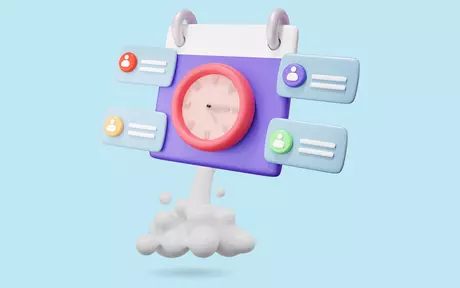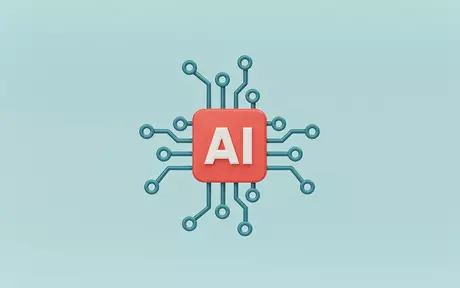
Merging legacy ERP systems with modern technology
As the engine of the world’s economy shifts from manufacturing to project-based, people-centric services businesses, we look at what that means for your aging technology.
Service organizations rely on project-based Enterprise Resource Planning (ERP) applications to help them manage their financials. These systems automate and simplify processes like quote-to-cash, resource and talent management, and time capture and billing. They also give you real-time visibility that improves efficiency and effectiveness. But for some organizations, there’s a problem.
Their adoption is being frustrated. Why? Often, it isn’t culture, management, or poor change processes preventing the adoption of new technologies. The problem is the technology that you are already using.
3 key considerations for legacy erp system migration
In many large established organizations, older outdated ERP and connected systems frequently rely on technology that’s over 20 years old. This creates problems like workflow bottlenecks, processing errors, and lost data. And unlike fine wine, your software does not typically get better with age.
1. Your legacy ERP systems can’t depend on outdated operating systems forever
Perhaps the biggest problem with your legacy ERP is that it needs to run on its original operating system. Occasionally leaving businesses reliant on obsolete platforms like Windows NT or even DOS.
These older OSes often can’t utilize all your workstation’s features. Multi-core CPUs, hard drives measured in TB, and RAM measured in GB didn’t exist back then, so your legacy software may have you wasting money on computing power.
2. Data migration in ERP security flaws
The older your software gets, the more likely it is to have known and avoidable security flaws. And this puts your data at risk unnecessarily as it moves around your systems.
Typically, this is corrected by regular upgrades that let your system adapt to threats and keep data safe as it moves. But even the most enduring legacy ERP system eventually reaches a natural “end of life.”
Microsoft Windows, for example, maintains a comprehensive calendar of its lifecycles. Once they stop supporting the version of Windows you’re using, you’re at even greater risk of a breach.
3. Legacy ERP systems can’t pivot
Technologies like big data analytics and cloud computing are transforming the way organizations work. Giving you more freedom and more power than ever before.
The problem for those trapped within legacy ERP systems is that your systems most likely can’t support them. This makes it difficult for you to pivot when the time comes, which makes managing challenges much harder than it needs to be.
A recent example from the US was when many state governments were frantically having to track down COBOL programmers to process stimulus payments during the Covid-19 outbreak. This turned what should have been a relatively simple process into a crisis.
It’s an instructive example as almost all banks worldwide still rely heavily on legacy systems!
Finding a better solution: is it time to move on?
Facing these issues has led many organizations to look to modern solutions. In fact, there’s research that shows that the top new technologies currently being adopted by CIOs in the professional services industry are:
- Big Data Analytics
- Cloud Computing
- Machine Learning, App- and Web-Enabled Markets, Internet of Things (a three-way tie)
However, while these modern technologies undoubtedly make efficiencies and innovations possible, the legacy systems you link them to can often make implementing them impossible. So what’s the solution?
Why move away from unwanted legacy ERP systems?
Unfortunately, getting yourself out from under an obsolete system is rarely easy. Bill Gates isn’t as rich as he is because Microsoft was the best solution on the market. He was just the first to realize and take advantage of how difficult it is to retire a system once people come to rely on it.
But there are steps you can take to make the process easier. And with the right software installation and partner, merging legacy systems with modern technology like cloud, AI, and IoT into your legacy technology platforms is possible. But how?
Timing is everything
The first step is picking the right time to make your move. As a rule of thumb, you should adopt new technologies as soon as it becomes obvious that your current platform is outdated. How to spot this? Look for examples, such as, if your PSA software isn’t built for cloud-based automation, then you’re behind the curve.
A Position of strength
The second thing to do is build a strong case for retiring the outdated system. This is as much for you as it is for the board, as it will force you to consider all use cases (official and unofficial) and to consider the implications for retiring or migrating business data.
Don’t reset, connect
The third thing to consider is if your plan leverages emerging technology to create efficiency. To do this, you’ll have to make some critical strategic choices. How will your new system integrate with others? Will you partially automate routine functions or completely automate them? The key is to play smart. You may not need to scrap everything you have, and with the right solution bringing everything together can be made a lot easier.
Different choices will require different levels of investment. Generally, the more completely you wish to automate, the more integrated your systems must become, and the higher your level of investment (both time and money) will be. Ultimately, the path you choose will depend on your organization, budgets, and individual needs and use cases.
How to measure your ERP migration and upgrade’s success
Technology is meant to boost productivity and quality. It should remove barriers, let you complete tasks more easily, and scale up to any volume.
Ultimately, all businesses are looking to generate revenue. When installing your new software, you should be reducing costs while enabling your team to generate more revenue by working faster and more efficiently.
A successful software implementation’s real success measurements are growth, profit, quality, streamlined operations, and reduced administration and rework. If you can show significant progress in any one of these, you’ll be well on your way to a successful project.
How can Unit4 help you achieve this?
Unit4’s cloud ERP helps you bring together all your data and systems. It gives you a single source of real-time data and the ability to share insights across your organization and systems instantly. You can find out more about our ERP and what it’s capable of here.





